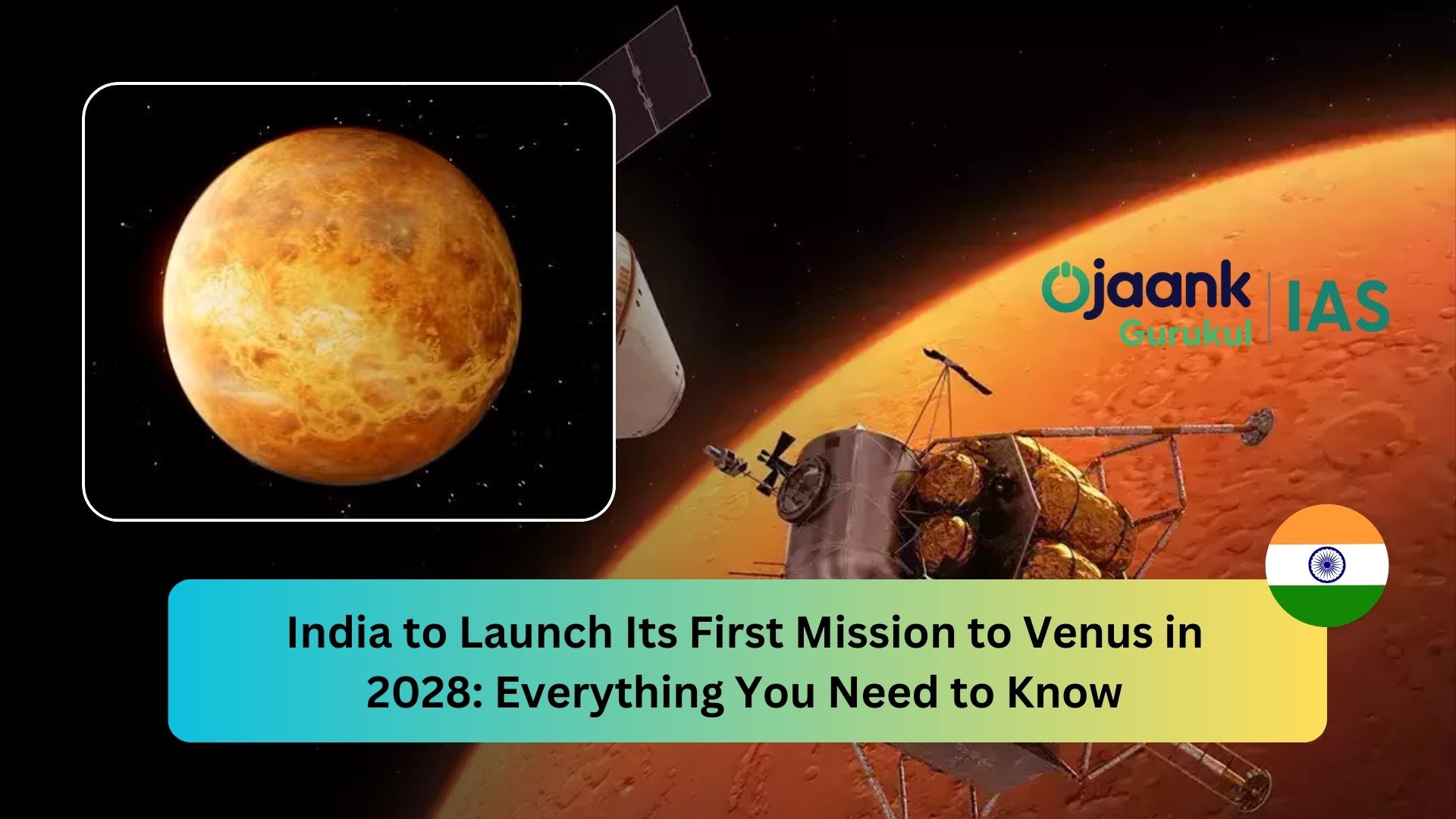India’s First Venus Mission in 2028: All You Need to Know

Venus, often referred to as Earth’s twin due to its similar mass, density, and size, holds the key to understanding our planet’s evolution.
India's decision to launch its first Venus mission in 2028 is a monumental step in interplanetary exploration. Here's a comprehensive overview of this groundbreaking initiative by ISRO (Indian Space Research Organisation).
Why Study Venus?
Venus is a fascinating planet that, despite its similarities to Earth, exhibits stark differences:
- Extreme Temperatures: Venus’s surface temperature reaches 462°C, hotter than Mercury, due to a runaway greenhouse effect.
- Thick Atmosphere: Its atmosphere is 96.5% carbon dioxide with clouds of sulphuric acid, resulting in atmospheric pressure akin to being deep underwater on Earth.
- Unique Rotation: Venus rotates very slowly, with one rotation taking 243 Earth days.
- Water’s Past Presence: Venus is believed to have once harbored water, but today it is an arid, desolate world.
Studying these features could provide insights into Earth’s climate evolution and the potential future of our planet.
India’s Venus Mission: Key Details
Approved by the Union Cabinet, India’s Venus mission is slated for launch in March 2028, marking India’s second interplanetary endeavor after the Mars Orbiter Mission (Mangalyaan) in 2013. Here are the mission highlights:
-
Scientific Objectives:
The mission will carry instruments to study:- Venus’s surface and subsurface.
- Atmospheric composition, ionosphere, and solar interaction.
- High-energy particles and interplanetary dust flow.
-
Payload Specifications:
The satellite will host approximately 100 kg of scientific instruments, including:- An L and S band Synthetic Aperture Radar for surface imaging.
- A thermal camera and atmospheric composition analyzers.
-
Orbit and Travel:
The spacecraft will:- Use a sling-shot maneuver to gain speed from Earth’s orbit.
- Take around 140 days to reach Venus.
- Be placed in a 500 km x 60,000 km elliptical orbit initially, later reduced through aero-braking.
What Is Aero-Braking?
Aero-braking involves utilizing the drag of a planet’s atmosphere to gradually lower a satellite’s orbit. For Venus:
- The satellite will skim through the outer atmosphere at a height of 140 km multiple times.
- Careful adjustments ensure the spacecraft does not burn up due to excessive friction.
- The final orbit will range between 300 x 300 km or 200 x 600 km, enabling optimal operation of payloads.
Venus Missions Around the Globe
India’s mission joins a league of international efforts to explore Venus:
- The United States has planned two missions, DaVinci (2029) and Veritas (2031).
- European Space Agency (ESA) aims to launch EnVision by 2030.
- Japan and the erstwhile USSR have also conducted Venus missions, contributing significantly to the knowledge we have today.
Why Is the 2028 Timeline Significant?
Venus and Earth align optimally for missions every 19 months, offering the shortest path between the two planets. India’s mission was initially planned for 2023 but was rescheduled to 2028. Timely execution ensures cost-effectiveness and efficiency in fuel usage for the interplanetary journey.
India’s Growing Role in Space Exploration
This mission reflects India’s rising stature in global space exploration. Following the success of Chandrayaan (Moon) and Mangalyaan (Mars) missions, the Venus project further solidifies ISRO’s reputation for delivering innovative and cost-effective solutions in space technology.
Conclusion
India’s mission to Venus is poised to unlock secrets of Earth’s closest planetary neighbor and answer pressing questions about planetary evolution. By leveraging innovative technologies and international collaboration, ISRO is setting the stage for a new era in space exploration.
Stay tuned as India prepares to chart new territories in the cosmos!
Read More:
India’s First Step into Space Docking: The SpaDeX Milestone
ISRO SpaDeX Docking Mission Explained: India's Space Station Vision Takes Shape